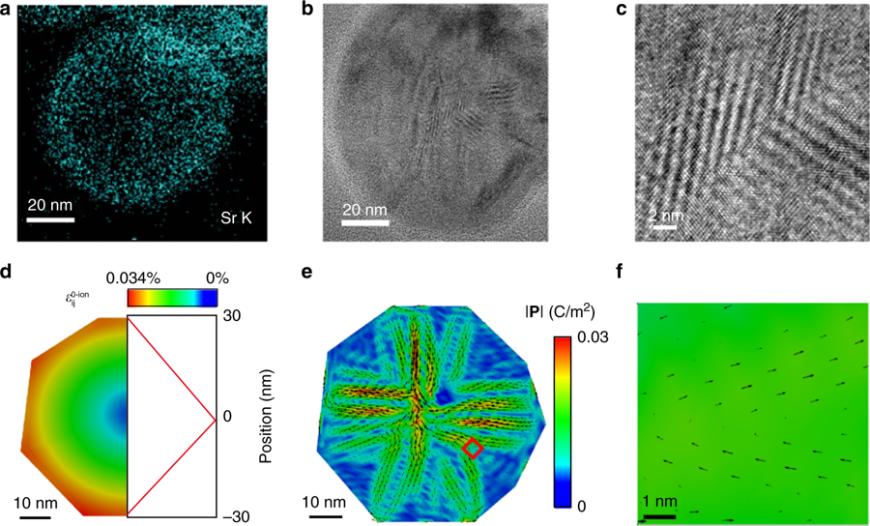Enabling nanoscale flexoelectricity at extreme temperature by tuning cation diffusion
New Publication in “Nature Communications”
2018/10/25

Authors: Leopoldo Molina-Luna, Shuai Wang, Yevheniy Pivak, Alexander Zintler, Héctor H. Pérez-Garza, Ronald G. Spruit, Qiang Xu, Min Yi, Bai-Xiang Xu, Matias Acosta
Any dielectric material under a strain gradient presents flexoelectricity. Here, we synthesized 0.75 sodium bismuth titanate −0.25 strontium titanate (NBT-25ST) core–shell nanoparticles via a solid-state chemical reaction directly inside a transmission electron microscope (TEM) and observed domain-like nanoregions (DLNRs) up to an extreme temperature of 800 °C. We attribute this abnormal phenomenon to a chemically induced lattice strain gradient present in the core–shell nanoparticle. The strain gradient was generated by controlling the diffusion of strontium cations. By combining electrical biasing and temperature-dependent in situ TEM with phase field simulations, we analyzed the resulting strain gradient and local polarization distribution within a single nanoparticle. The analysis confirms that a local symmetry breaking, occurring due to a strain gradient (i.e. flexoelectricity), accounts for switchable polarization beyond the conventional temperature range of existing polar materials. We demonstrate that polar nanomaterials can be obtained through flexoelectricity at extreme temperature by tuning the cation diffusion.



